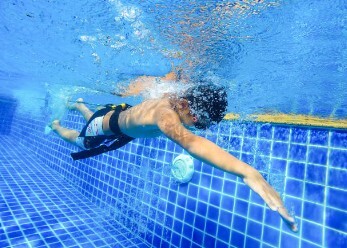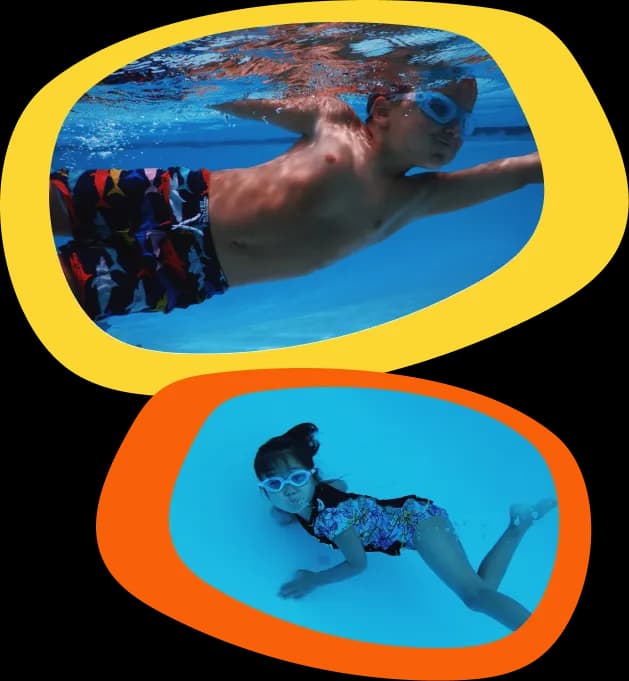What is a Swim Tether? Types, Pros & Cons

Written by Olivia Darr — 7 min read

What is a swim tether? Types, pros & cons
When deciding whether or not to use a swimming tether in your training, there are a few other questions you need to ask yourself first.
What is a swimming tether? What are some of the benefits and drawbacks of using a swimming tether? Who should use a resistance swimming tether, and what is it for?
What are the types of swimming tether systems?

Foot Tether
There are two common types of swimming tethers: foot tethers and resistance belts. A resistance belt is one that you straps around your waist, and the tether falls behind you while you're swimming. The foot tether is strapped to one of your ankles, and follows behind you as you kick. Swimming tethers are used for resistance training, and allow the swimmer to swim at any pace while staying in place to build strength.

Resistance Belt
Many collegiate swim teams use tethers in their training, such as Florida State University, Purdue University, and the University of Florida. While I was a member of my YMCA swim team, we used the resistance belt while we were preparing for large swim meets. If used correctly, resistance belts can be beneficial, but they can be detrimental to the swimmer if used incorrectly.
I only have experience with, and much prefer the resistance belt. I feel that the ankle restraint might cause a hindrance in your swimming form by changing your kick, so I prefer to use the waist belt. Because I am most comfortable with the waist belt, that is all I will speak to. However if you are interested in, or have experience with the ankle restraint, they are likely to be beneficial as well!
Who should use a swimming tether?
Swimming tethers can be used by anybody who is looking to build strength and resistance in their swimming. I would recommend those who are more experienced to use swimming tethers as opposed to those who are newer, simply due to the fact that repeated use can cause injury if used incorrectly. Additionally, it is important to use a tether that is appropriate for your size and strength. Make sure you are cognizant of the resistance of the tether before use.
What is a swimming tether for?

Swimming tethers are used in small to medium sized pools, and help build resistance while swimming. Because they help you stay in place while swimming, tethers can be used while sprinting, keeping pace, or just swimming normally.
By repeating the same action time and time again, swimming tethers can also be used to correct technique effectively. Since you can add as little or as much resistance as you want, you can work your technique while also keeping in mind the speed you wish to achieve.
What are the benefits?
If used correctly, swimming tethers can have tremendous benefits for the major muscle groups used while swimming. Repetition is one of the key concepts of the tether, and the repeating strokes will build strength with every stroke. Resistance is the other key concept. Since you are able to control how much or how little resistance the band gives you, you can be in control of how hard you are working with the tether.
By using a swimming tether, you are also gaining “muscle memory.” In other words, muscle memory is the repeated pattern of maximizing the amount of muscle tissue that is used in a given activity. Using a swimming tether is a great way to incorporate other styles of training, and it will be extra beneficial since it is already water-based, as opposed to dry land training.
What are the drawbacks?
If swimming tethers are used incorrectly, they can have detrimental impacts on muscle groups that may lead to injury. As stated above, one of the key concepts of swimming tethers is repetition. Just as muscle can build with activity, injuries can also form from repeated activity.
I prefer the waist belt simply due to the fact that I think the ankle tether would hinder my kick, especially breaststroke kick. From my experience, the only hindrance the waist belt poses is the resistance, which is ultimately the purpose. It seems like the ankle belt might get tangled up in your kick while swimming, which would defeat the purpose!
Conclusion
These are just a few of the questions to consider before you decide whether a swimming tether is right for you. They can be extremely beneficial if used safely and in the correct situation.
If you decide you want to give swimming tethers a try, make sure you get one that is the appropriate resistance for your needs! Additionally, make sure you have good technique that will not cause injury in the future.
Sunsational Swim School is focused on giving you great swimming technique so you will avoid any injury. Book your lessons today!
Olivia Darr’s bio:
Swim Instructor in Columbia, SC
Hi! My name is Olivia and I've been teaching swimming lessons for over two years now. I've worked with children for a number of years. My experience includes: Boys & Girls Club, Big Brothers Big Sisters, and the swim team I coach for. I just graduated from the University of Pittsburgh in August 2018 with a degree in communications and marketing. I love teaching swimming because I love helping kids become comfortable in the water and helping them become more confident!
Share on socials




